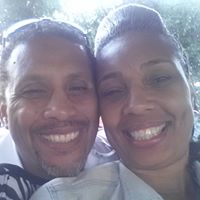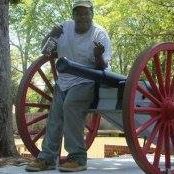Lawrence W Darnell
age ~84
from Cypress, TX
- Also known as:
-
- Lawrence Wayne Darnell
- Larry W Darnell
- Arry Darnell
- Phone and address:
-
13222 King Cir, Cypress, TX 77429
281 469-1073
Lawrence Darnell Phones & Addresses
- 13222 King Cir, Cypress, TX 77429 • 281 469-1073 • 281 894-5767
- Brownsville, TX
- Houston, TX
- 13222 King Cir, Cypress, TX 77429 • 281 513-7297
Work
-
Position:Executive, Administrative, and Managerial Occupations
Education
-
Degree:High school graduate or higher
Emails
Us Patents
-
Apparatus For Delivery Of Fluid To Opthalmic Surgical Handpiece
view source -
US Patent:6921385, Jul 26, 2005
-
Filed:Aug 5, 2002
-
Appl. No.:10/212351
-
Inventors:Don A. Clements - Cleburne TX, US
Lawrence W. Darnell - Cypress TX, US
Ramon C. Dimalanta - Rancho Santa Margarita CA, US
Sean C. Madden - Mission Viejo CA, US
Glenn R. Sussman - Laguna Niguel CA, US -
Assignee:Alcon, Inc. - Hunenberg
-
International Classification:A61M037/00
A61M001/00
A61B017/20 -
US Classification:604141, 604 22, 604 27
-
Abstract:An apparatus for delivery of a surgical fluid to a surgical handpiece is disclosed. The apparatus generally includes a container and an adapter receiving one end of the container. The container holds the surgical fluid to be delivered to the handpiece. The adapter is for removably engaging a receptacle in a surgical console and for fluidly coupling with a source of pressurized fluid in a surgical console.
-
Container For Delivery Of Fluid To Ophthalmic Surgical Handpiece
view source -
US Patent:7160268, Jan 9, 2007
-
Filed:Aug 5, 2002
-
Appl. No.:10/212619
-
Inventors:Lawrence W. Darnell - Cypress TX, US
Ramon C. Dimalanta - Rancho Santa Margarita CA, US
Sean C. Madden - Mission Viejo CA, US
Glenn R. Sussman - Laguna Niguel CA, US -
Assignee:Alcon, Inc. - Hunenberg
-
International Classification:A61M 37/00
A61M 1/00
A61B 17/20 -
US Classification:604141, 604 22, 604 27
-
Abstract:A container for delivery of a surgical fluid to a surgical handpiece is disclosed. The container includes a volume for receiving the surgical fluid to be delivered to the handpiece and an end for removably engaging a receptacle in a surgical console and for fluidly coupling with a source of pressurized fluid in a surgical console.
-
Drug Delivery Device
view source -
US Patent:7226435, Jun 5, 2007
-
Filed:Aug 1, 2005
-
Appl. No.:11/194723
-
Inventors:Lawrence W. Darnell - Cypress TX, US
-
Assignee:Alcon, Inc. - Hunenberg
-
International Classification:A61M 5/00
-
US Classification:604207
-
Abstract:A syringe-like device having a chamber in which a pressurizing piston reciprocates. The chamber is connected on one end to a vial containing a drug to be delivered to an eye and on the other end to a needle or cannula for administering the drug to an eye. Pulling proximally backwards on the piston creates a vacuum in the chamber and draws the drug out of the vial. Upon release of the piston, a spring pushes the piston forward, pressurizing the chamber. Delivery of the drug is controlled by a roller pinching off a section of compliant tubing between the chamber and the cannula, with a design similar to a peristaltic pump. A one-way valve prevents the drug from being expelled back into the vial. The flow rate of the drug out of the cannula can be controlled by rotation of the roller.
-
Spatially Distributed Spectrally Neutral Optical Attenuator
view source -
US Patent:20060033926, Feb 16, 2006
-
Filed:Aug 15, 2005
-
Appl. No.:11/204305
-
Inventors:Alexander Artsyukhovich - Irvine CA, US
T. Rowe - Dana Point CA, US
Bruno Lassalas - Irvine CA, US
Lawrence Darnell - Cypress TX, US
W. Kozlowski - Tega Cay SC, US -
International Classification:G01B 9/02
-
US Classification:356479000
-
Abstract:A system, apparatus and method for spatially distributed, spectrally neutral optical attenuation are disclosed. One embodiment of the apparatus comprises: an attenuator fin plate; a set of attenuator fins, wherein each of the fins is operably coupled to the fin plate at a preset fin angle to the fin plate normal such that the attenuator fins maintain their position relative to the fin plate as the fin plate moves; and a means for rotating the fin plate a set angular distance around an axis of rotation, wherein the axis of rotation is at a preset fin plate angle to a light beam direction of travel and wherein the attenuator fins block varying amounts of the light beam as the fin plate is rotated through the set angular distance. The attenuator fin plate and attenuator fins can be a single, integral component, wherein the attenuator fin plate is etched and stamped to form the attenuator fins, or separately formed components that are attached, for example, to a separate frame. The means for rotating the fin plate would then comprise means to rotate the attenuator frame. Means for rotating the attenuator fin plate or frame can include a stepper motor, for discrete step positions, or a continuously variable motor for infinitely variable positioning. The means for rotating the attenuator fin plate or frame can be electronically controlled, for example, by a microprocessor on a printed circuit board or other such controller as known to those having skill in the art. The preset fin angle can be 31 degrees, and the preset fin plate angle can be 90 degrees. Each of the attenuator fins can be operably coupled to the fin plate at the same preset fin angle and the fin plate and/or frame centered on the axis of rotation. Each fin's major axis can be parallel to every other fin's major axis, and the axis of rotation can be parallel to each fin's major axis. The set of attenuator fins can comprise eight attenuator fins and the attenuator fins can be spaced equally apart from one another. The attenuator fin plate and set of attenuator fins can be sized so as to interfere with the entire light beam cross-section/aperture at a position along the set angular distance corresponding to zero percent of the optical beam passing through the attenuator fins. The embodiments of the attenuator of this invention can be configured for use within an ophthalmic high brightness illumination system.
-
System And Method For Magnetic Hand Controller
view source -
US Patent:20090040181, Feb 12, 2009
-
Filed:Aug 9, 2007
-
Appl. No.:11/836426
-
Inventors:Lawrence Darnell - Cypress TX, US
Christopher Horvath - Irvine CA, US
Bruno Lassalas - Irvine CA, US -
International Classification:G06F 3/033
-
US Classification:345161
-
Abstract:Embodiments provide a system and method for magnetic hand controllers. An embodiment of a magnetic hand controller can include a base portion comprising a base magnet, a hand control portion spaced from and movable relative to the base portion, the hand control portion comprising a hand control and a hand control magnet coupled to the hand control and oriented so that the hand control magnet is attracted to the base magnet. The hand control portion may be coupled to a device such that a user may control the device by moving the hand control.
-
Spatially Distributed Spectrally Neutral Optical Attenuator
view source -
US Patent:20090234334, Sep 17, 2009
-
Filed:Mar 24, 2009
-
Appl. No.:12/410115
-
Inventors:Alexander Artsyukhovich - Dana Point CA, US
T. Scott Rowe - Dana Point CA, US
Bruno Lassalas - Irvine CA, US
Lawrence Darnell - Cypress TX, US -
International Classification:A61F 9/007
A61B 18/18 -
US Classification:606 4
-
Abstract:A system, apparatus and method for spatially distributed, spectrally neutral optical attenuation. One embodiment of the apparatus can include: an attenuator fin plate; a set of attenuator fins, wherein each of the fins is operably coupled to the fin plate at a preset fin angle to the fin plate normal such that the attenuator fins maintain their position relative to the fin plate as the fin plate moves; and a motor for rotating the fin plate a set angular distance around an axis of rotation, wherein the axis of rotation is at a preset fin plate angle to a light beam direction of travel and wherein the attenuator fins block varying amounts of the light beam as the fin plate is rotated through the set angular distance. The attenuator fin plate and attenuator fins can be a single, integral component, wherein the attenuator fin plate is etched and stamped to form the attenuator fins, or separately formed components that are attached, for example, to a separate frame. The embodiments of the attenuator of this invention can be configured for use within an ophthalmic high brightness illumination system.
-
Multi-Tube Clamp Actuator And Mating Cartridge
view source -
US Patent:55843204, Dec 17, 1996
-
Filed:Oct 31, 1994
-
Appl. No.:8/332814
-
Inventors:David Skinkle - Evergreen CO
Timothy Igoe - Lakewood CO
Lawrence Darnell - Cypress TX -
Assignee:COBE Laboratories, Inc. - Lakewood CO
-
International Classification:F16K 706
-
US Classification:137565
-
Abstract:An apparatus for managing and controlling fluid flow through a plurality of fluid conduits includes a chassis, a plurality of conduit occluders mounted in the chassis, each occluder for association with at least one of the plurality of fluid conduits and each being selectively actuatable between an open position permitting fluid flow through a respective fluid conduit and a closed position obstructing conduit fluid flow. A single actuator is mounted in the chassis, the actuator for adjusting the plurality of occluders between the open and closed positions. A roller cage is also mounted in the chassis for mechanically interconnecting the actuator to the plurality of conduit occluders so that the single actuator is mechanically capable of maintaining one of the plurality occluders in the closed position while maintaining another of the plurality of occluders in the open position.
-
Centrifuge Bowl Mount
view source -
US Patent:47188880, Jan 12, 1988
-
Filed:Mar 10, 1986
-
Appl. No.:6/838660
-
Inventors:Lawrence W. Darnell - Cypress TX
-
Assignee:Cardiovascular Systems, Inc. - The Woodlands TX
-
International Classification:B04B 900
-
US Classification:494 85
-
Abstract:A centrifuge bowl mount with a base and having one or more toggle members disposed thereon which are movable from a non-contact or non-engaging first positon to a contact or engaging second position in which they either (a) contact or engage the bowl or (b) move other members such as seal members disposed on the base or move push membes which in turn move the seal members to contact or engage the bowl.
Resumes

Lawrence Darnell
view source
Lawrence Darnell
view sourceLocation:
United States

Lawrence Darnell
view sourceLocation:
United States

Lawrence Darnell
view sourcePlaxo

David Lawrence Darnell
view sourceFlickr
Googleplus

Lawrence Darnell
Youtube
Myspace
Classmates

Lawrence Darnell
view sourceSchools:
Collins High School Oak Hill WV 1971-1975
Community:
Randy Bibb, Buster Burke, John Adkins, Debby Aliff, Cara Payne, Debby Burgess, Ricky Campbell, Sandra Skaggs

LAWRENCE DARNELL BAKER | ...
view source
Darnell Lawrence | Malcol...
view source
Lawrence Darnell
view source
Lawrence Darnell
view source
Lawrence Darnell Ridley
view source
Lawrence Darnell Foote
view source
Darnell Lawrence
view source
Lawrence Darnell
view source
Lawrence Darnell
view sourceGet Report for Lawrence W Darnell from Cypress, TX, age ~84















